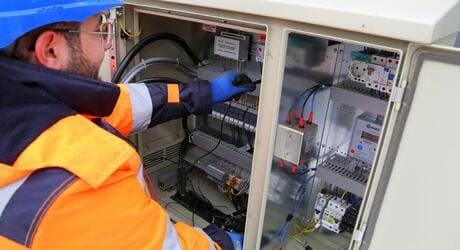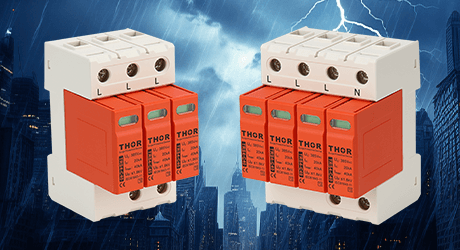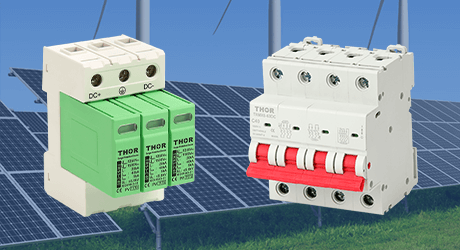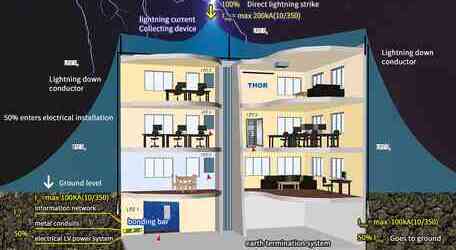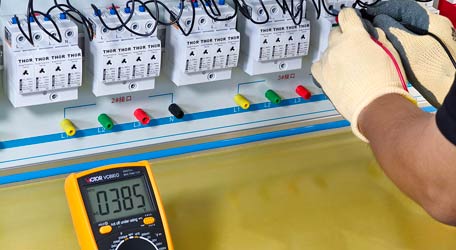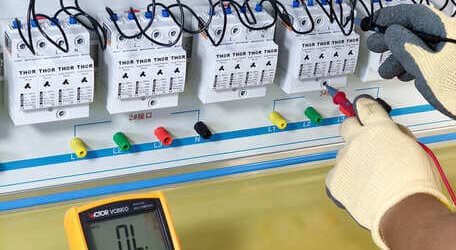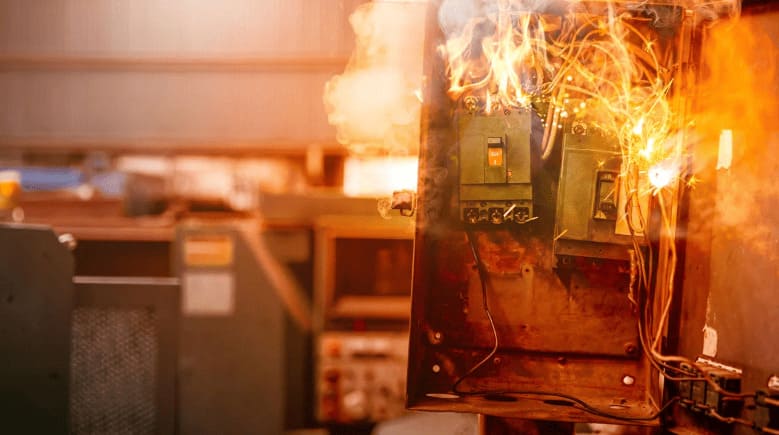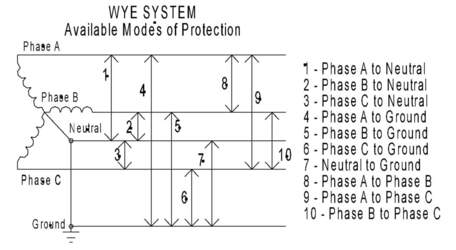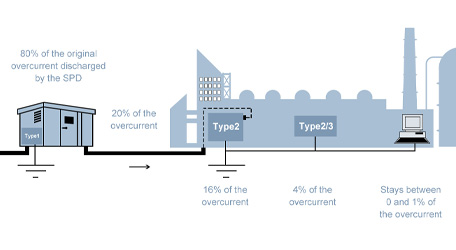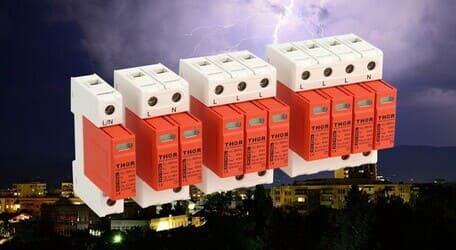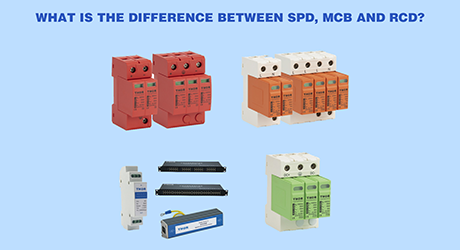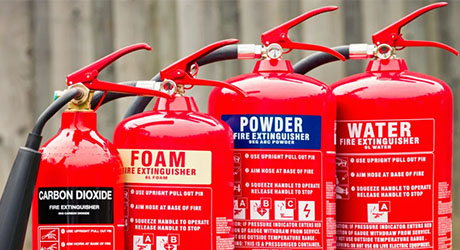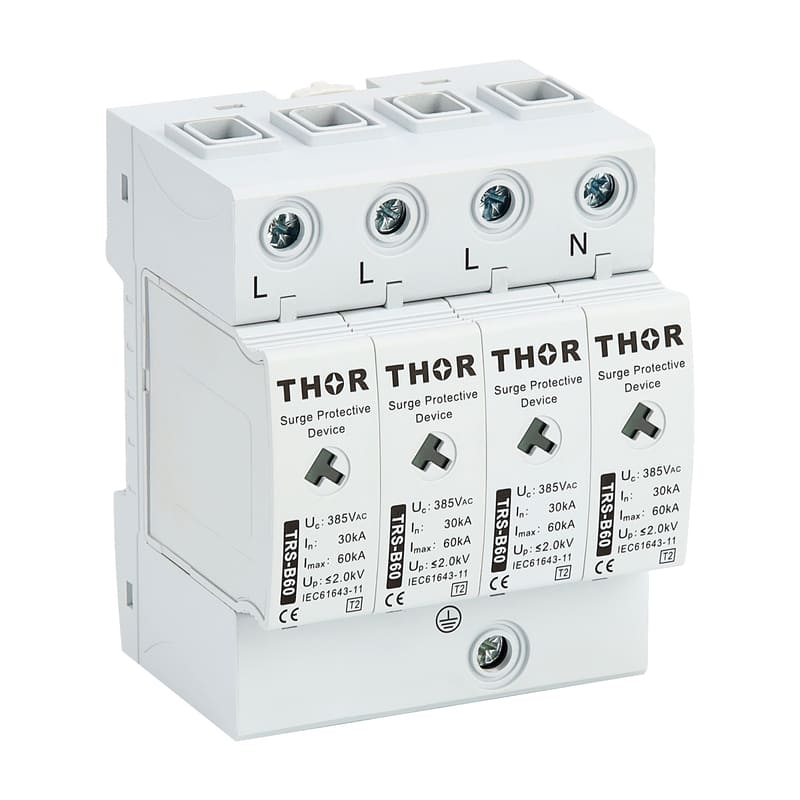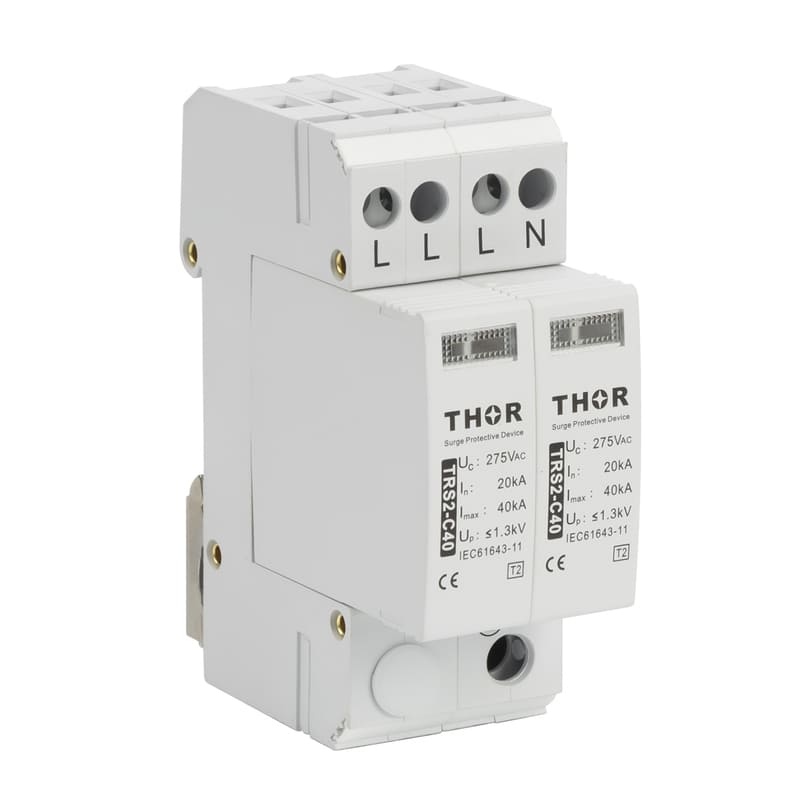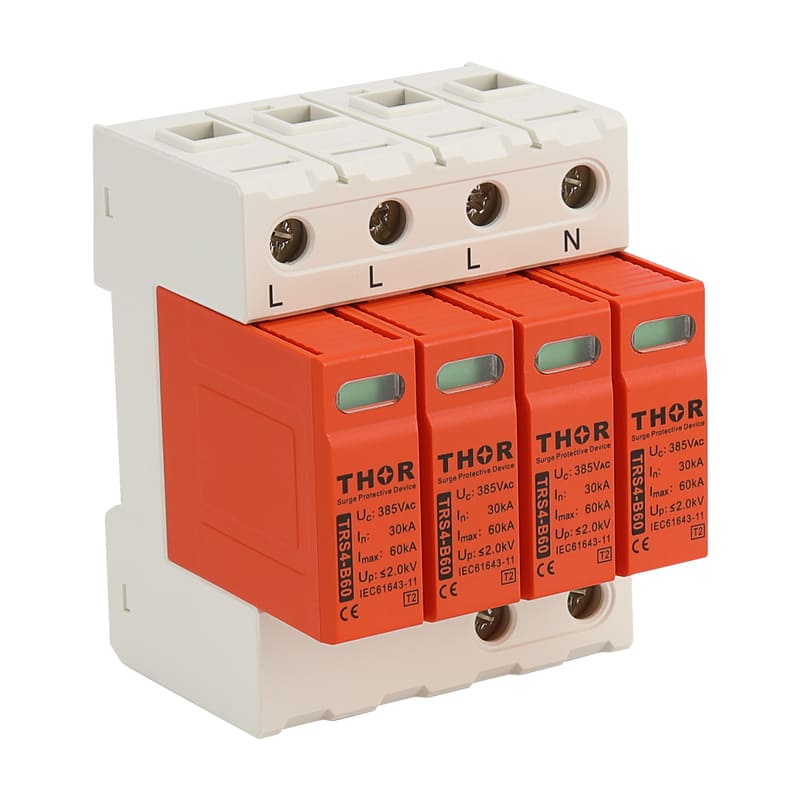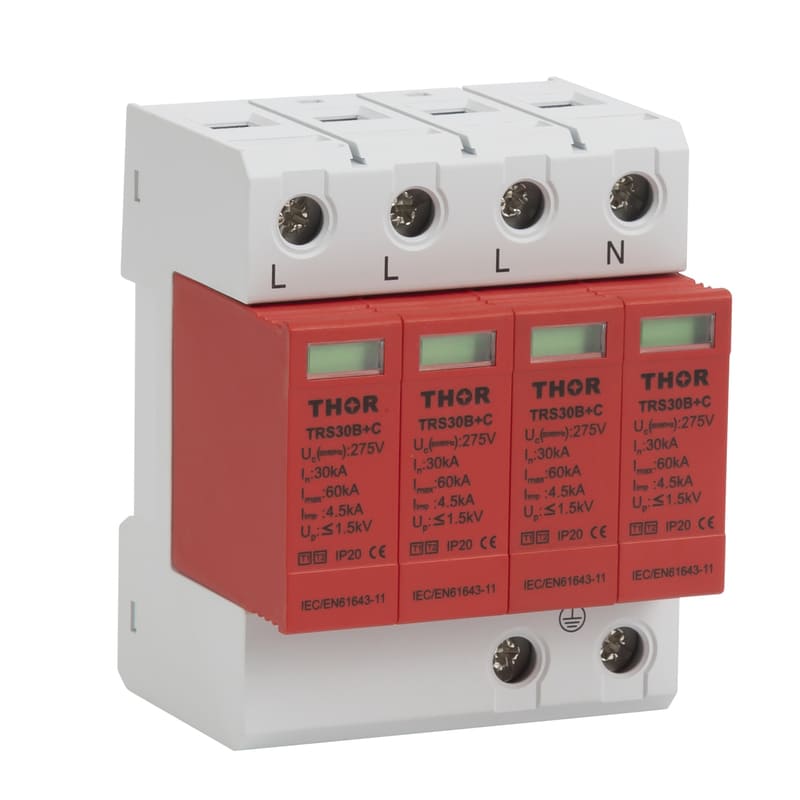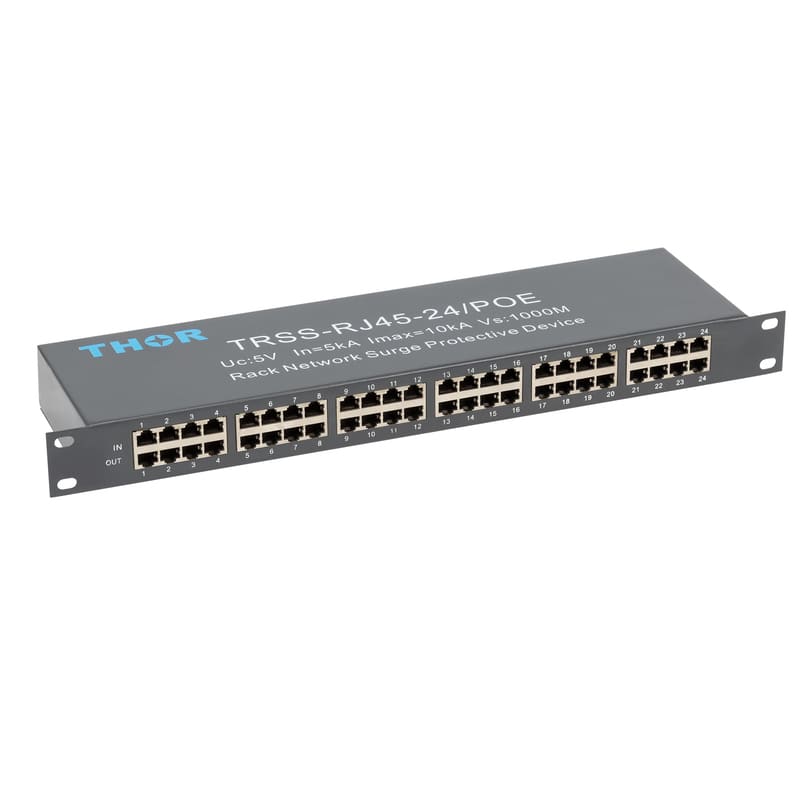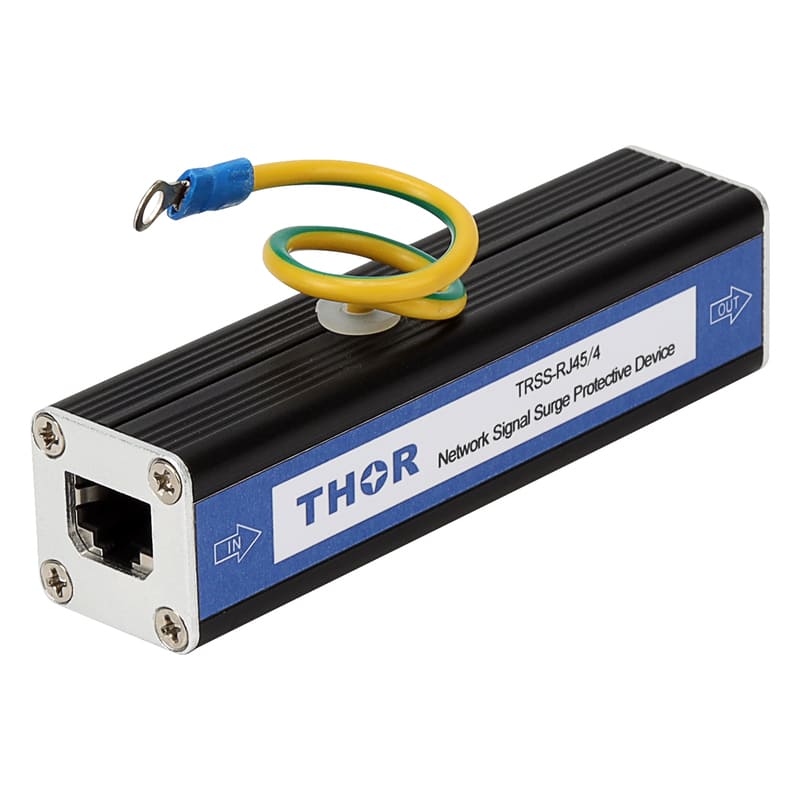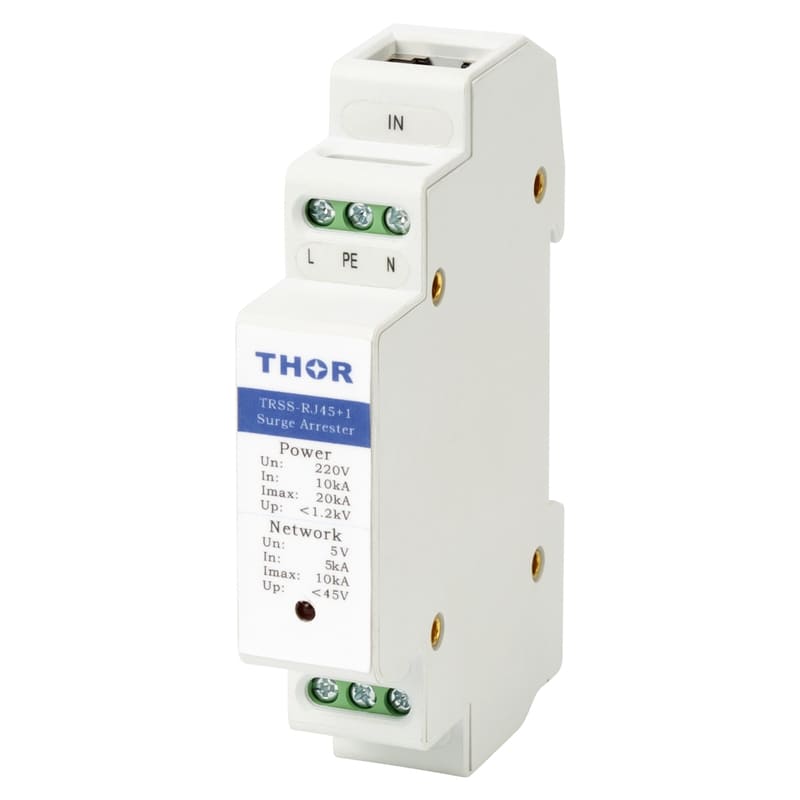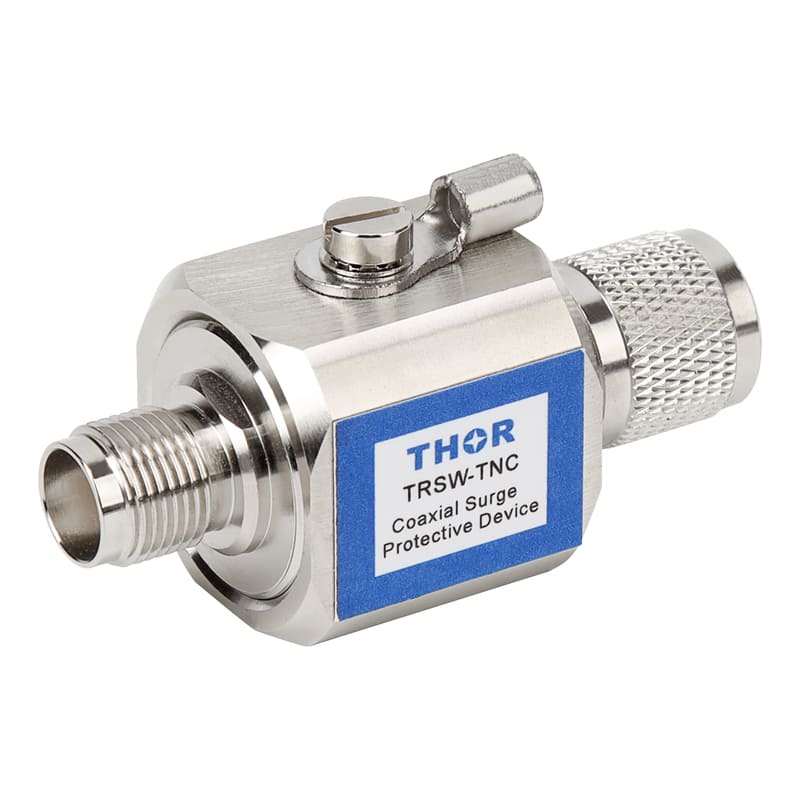Growing demand of T1+2 surge protection devices

As modern electrical systems become more interconnected and complex, the demand for Type 1+2 Surge Protective Devices (SPDs) is rapidly accelerating. The hybrid solutions are no longer just an upgrade—they’ve become essential infrastructure components across industries, from data-driven enterprises to energy-conscious developments.
The global rise in industrial and commercial construction—fueled by e-commerce growth, manufacturing expansion, and smart infrastructure—has created unprecedented pressure for resilient and compact electrical protection. From renewable energy to industrial plants, organizations are prioritizing solutions that defend against both lightning-induced surges and everyday overvoltages.
A key sector driving demand is renewable energy, where solar farms and wind turbines need protection from both atmospheric discharges and internal surges. Within this area, TRS5 series T1+2 AC SPDs by THOR offers a compelling mix of reliability, low maintenance, and installation flexibility, making it a strong option alongside DEHN’s energy-optimized solutions and CITEL’s modular surge protection systems.
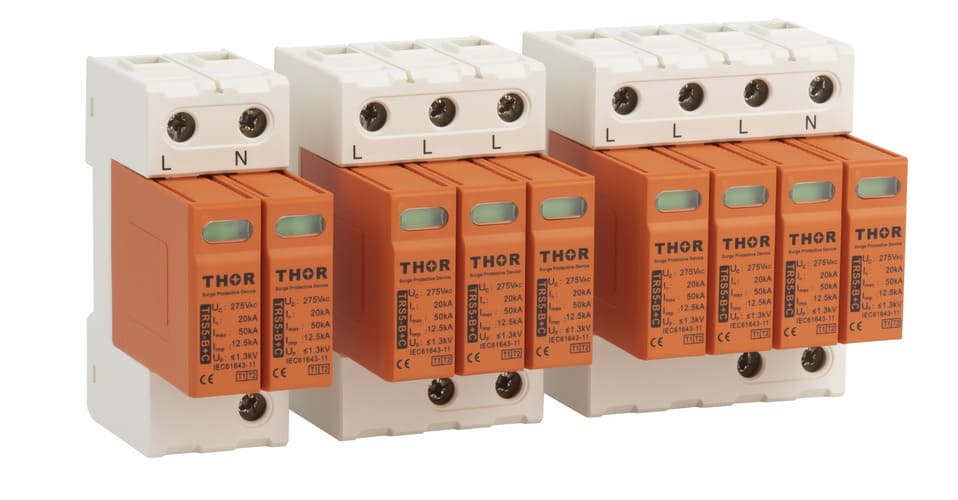
Figure 1 - Latest TRS5 series surge protection device from Thor
Today’s business owners recognize that grid disturbances, lightning events, and internal equipment failures pose serious risks to operations, safety, and profitability. In 2023 alone, surge-related incidents cost businesses over $26 billion in downtime and equipment loss, turning SPDs from a “nice-to-have” into a mission-critical safeguard.
In response, leading SPD manufacturers such as DEHN, CITEL, and THOR have introduced advanced Type 1+2 surge protection devices specifically designed for modern infrastructure needs. While DEHN is known for its precision-engineered designs and CITEL for its strong global presence in critical environments, THOR’s TRS5 series stands out with its streamlined installation, cost-effectiveness, and space-saving form factor—particularly valued in fast-paced project deployments.
Type 1+2 SPDs also simplify compliance with standards such as NEC 2023, reduce installation complexity, and offer real cost savings. A single hybrid SPD can cut labor time by up to 40%, eliminating the need for separate Type 1 and Type 2 units.
Growing awareness of surge-related risks is also accelerating SPD adoption. Insurers now often require SPDs for coverage in lightning-prone regions, and industries like healthcare, logistics, and advanced manufacturing understand that even microsecond-level surges can disrupt sensitive IoT sensors, PLCs, or HVAC controllers.
In an era where business continuity hinges on power reliability, Type 1+2 SPDs from trusted names like DEHN, CITEL, and THOR are not just protective devices—they’re strategic tools for resilience, performance, and peace of mind in an increasingly electrified world.
What is a T1+2 (Class B+C) surge protection device
A Type 1+2 (Class B+C) surge protection device (SPD) is a hybrid solution designed to protect electrical installations from both high-energy lightning strikes and transient overvoltages caused by internal switching operations. It combines the protective features of both Type 1 (Class B) and Type 2 (Class C) SPDs into a single unit, offering comprehensive protection for low-voltage systems at the main distribution board.
Type 1 (Class B) SPDs are engineered to handle direct lightning strikes, which introduce massive energy surges characterized by the 10/350 μs current waveform, essential for locations where lightning strikes are a risk—such as buildings with external lightning protection systems.
Meanwhile, Type 2 (Class C) SPDs, tested against the 8/20 μs waveform, protect against indirect surges from switching operations or residual lightning effects downstream. Type 2 protection addresses more common, lower-energy surges caused by switching operations in the power grid or within the building itself.
Traditionally, in earlier surge protection setups, installers would place a Type 1 SPD at the main panel and a Type 2 SPD at the sub-panel or distribution box to achieve cascaded protection. While this approach is technically sound, using a Type 1+2 SPD streamlines the process by reducing installation and maintenance costs, while also saving valuable space - especially in crowded electrical environments.
The combined advantages that T1 and T2 SPDs offer make T1+2 SPDs ideal for modern infrastructure, such as smart buildings, industrial facilities, or renewable energy systems, where reliability and continuity are critical. The compliance with safety standards like IEC 61643-11, makes them a preferred choice for comprehensive surge protection.
Modern SPD Innovations
As electrical infrastructures evolve, surge protective devices (SPDs) have advanced significantly to meet growing demands for safety, reliability, and ease of maintenance. Industry leaders like CITEL and DEHN have pioneered innovative features that now set the standard for modern SPD design. A key trend is the integration of pluggable modules, allowing quick replacement without disconnecting the power—ideal for minimizing downtime in industrial or critical settings. Status indicators (mechanical or LED-based) provide real-time visual monitoring of device health, enhancing maintenance efficiency.
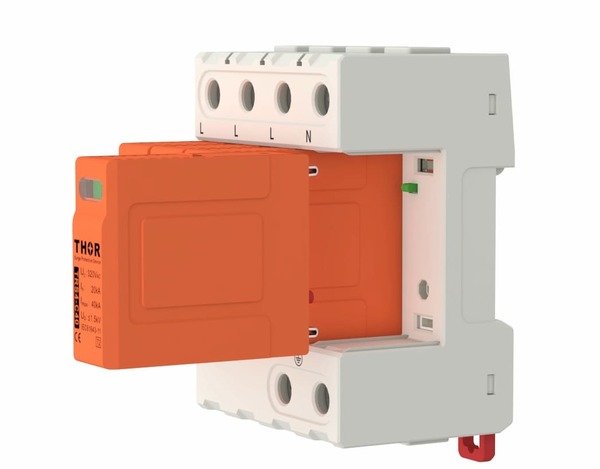
To tackle the dangers of surge-induced overcurrent and thermal stress, modern SPDs are equipped with built-in thermal disconnectors and arc-extinguishing technologies, ensuring safe disconnection in case of failure. Spark-gap technology offers high impulse current handling while maintaining low residual voltage—crucial for protecting sensitive equipment. Meanwhile, CITEL’s VG technology focuses on controlled spark gap behavior, combining durability with precision response.
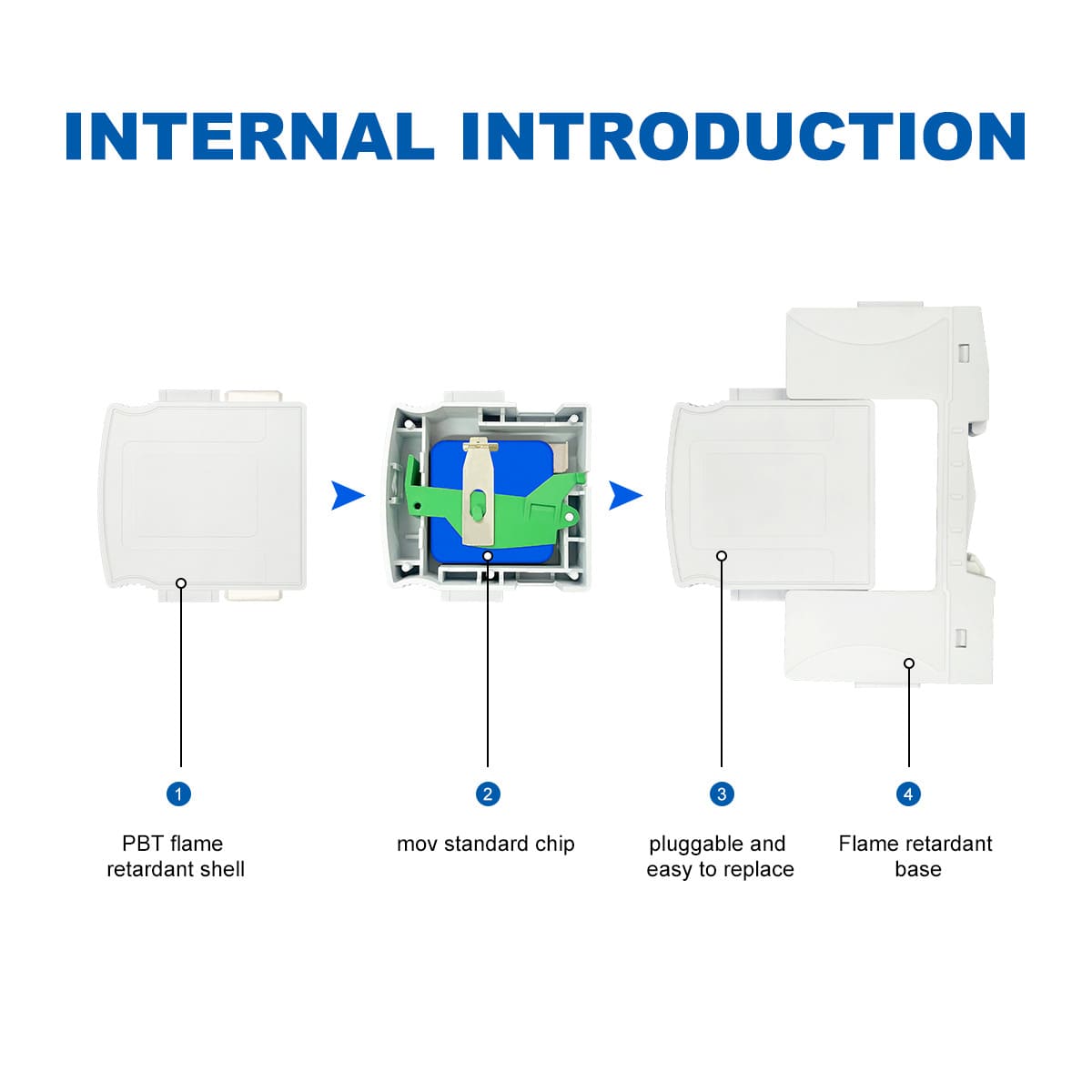
Figure 2 - Arc extinguisher mechanism
SPD designs today also emphasize DIN-rail mounting for standardized, space-efficient installation and IP-rated enclosures (typically IP20–IP65) to withstand harsh environments. With increasing focus on global compatibility, many SPDs now feature universal terminal layouts and multi-standard compliance (e.g., IEC, UL, GB), making them suitable across international markets.
Din-rail mounting design
Additionally, compact designs and modular configurations help integrate surge protection into space-constrained panels without compromising performance.
Comparative Analysis: DEHN vs. CITEL vs. Thor – Modern T1+2 SPDs
In today’s electrified environments, selecting the right Type 1+2 SPD is a balancing act between performance, monitoring capability, and cost-efficiency. DEHN, CITEL, and Thor each offer distinct advantages that align with different application priorities—from high-end industrial resilience to compact, smart-building readiness.
DEHN’s DSH TT 255 is engineered for high-performance protection in critical infrastructure. With a total lightning impulse current capacity of 50 kA and 12.5 kA per line, it excels at managing extreme surges. It includes advanced follow current extinguishing (up to 25 kA) without tripping a 32A fuse, making it highly selective and compatible with existing circuit protection. The rugged construction and extensive third-party certifications (VDE, UL, KEMA) make it ideal for harsh industrial and utility installations where system uptime is non-negotiable.
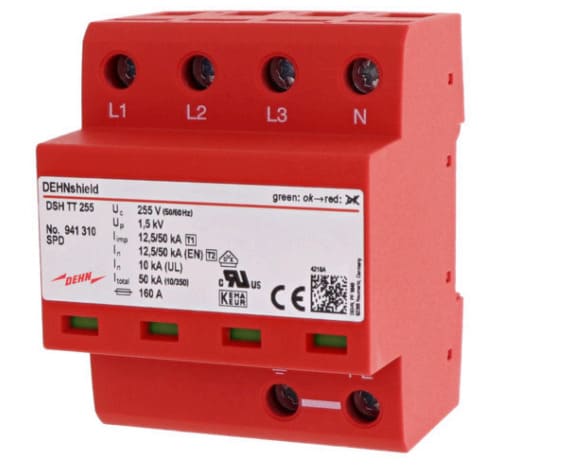
Figure 3 - DEHN’s DSH TT 255 T1+2 surge protection device
CITEL’s DAC1-13S-31-150 targets environments where both performance and smart diagnostics are crucial. It combines 20 kA nominal and 50 kA max discharge current with pluggable modules, a mechanical red/green indicator, and remote signaling output for real-time monitoring. It also boasts very low voltage protection levels—down to 0.6 kV at 5 kA—reducing stress on sensitive electronics. Strong performance makes it a strong fit for commercial buildings, data centers, and automation hubs where both protection and observability matter.
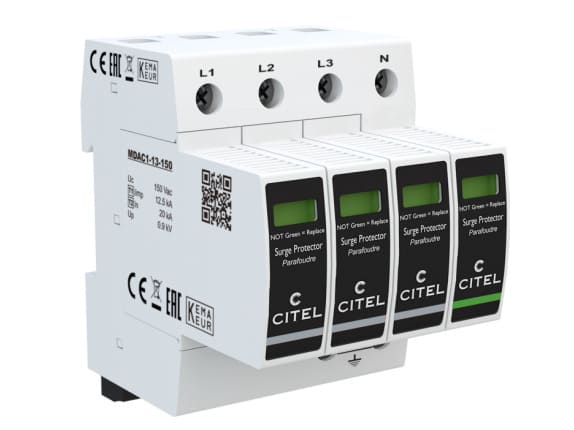
Figure 4 - CITEL’s DAC1-13S-31-150 surge protective device
Thor’s TRS5 offers a practical, value-driven solution. It includes key functions like thermal disconnection, remote signaling, and a response time under 25 ns, all in a compact DIN-rail mountable unit. While it doesn't offer advanced diagnostics or modularity, its compliance with international standards and competitive performance (50 kA max discharge, ≤1.3 kV Up) make it an efficient choice for budget-conscious projects in logistics, retail, or smart residential systems.
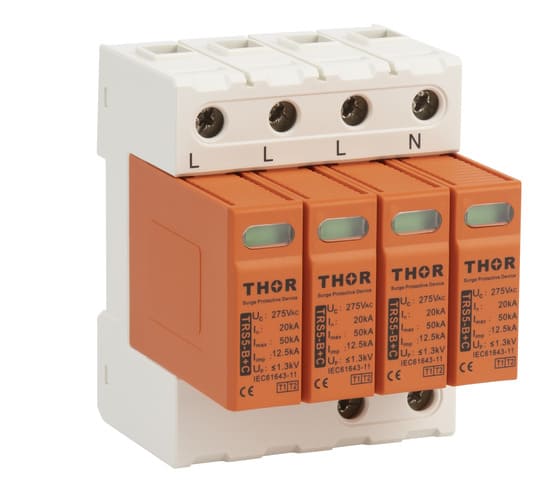
Figure 5 - TRS5 3+1 T1+2 surge arrester
Together, three SPDs represent leading approaches to modern surge protection, letting users choose based on their specific priorities: durability, intelligence, and efficiency.
|
Feature |
DEHN DSH TT 255 |
Thor TRS5 |
CITEL DAC1-13S-31-15 |
|
Nominal Voltage (UN) |
230/400 V |
230 V |
120/208 V |
|
Max Operating Voltage (UC) |
255 V |
275 V |
150 V |
|
Lightning Impulse Current (10/350 µs) per pole |
12.5 kA |
12.5 kA |
12.5 kA |
|
Total Lightning Current (Itotal) |
50 kA |
50 kA |
50 kA |
|
Nominal Discharge Current (In) |
12.5 kA |
20 kA |
20 kA |
|
Max Discharge Current (Imax) |
N/A |
50 kA |
50 kA |
|
Voltage Protection Level (Up) |
≤1.5 kV |
≤1.3 kV |
0.9 kV (L/N), 1.5 kV (N/PE) |
|
Response Time |
≤100 ns |
<25 ns |
N/A |
|
Follow Current Extinguishing |
25 kArms / 100 Arms |
N/A |
None |
|
Thermal Disconnector |
Yes |
Yes |
Yes |
|
Remote Signaling |
No |
Yes |
Yes |
|
Pluggable Module |
No |
No |
Yes |
|
DIN Rail Mount |
Yes |
Yes |
Yes |
|
IP Rating |
IP20 |
IP20 |
IP20 |
|
Certifications |
KEMA, VDE, UL |
EN61643-11 |
KEMA |
|
Operating Temp Range |
-40°C to +80°C |
-40°C to +70°C |
-40°C to +85°C |
Comparison table of T1+2 SPDs from Citel, Thor and DEHN
Applications and industries
Type 1+2 SPDs with a 3+1 configuration are vital for modern power distribution systems, especially in TT and TN-S earthing systems, where the neutral and earth are handled distinctly. In these systems, surge currents must be safely diverted not just between phase and neutral, but also from neutral to earth. The 3+1 SPD layout includes three varistors (for L–N protection) and one spark gap or varistor between N and PE, offering enhanced safety by isolating neutral-to-earth disturbances - is ideal for main distribution boards in commercial and industrial installations.
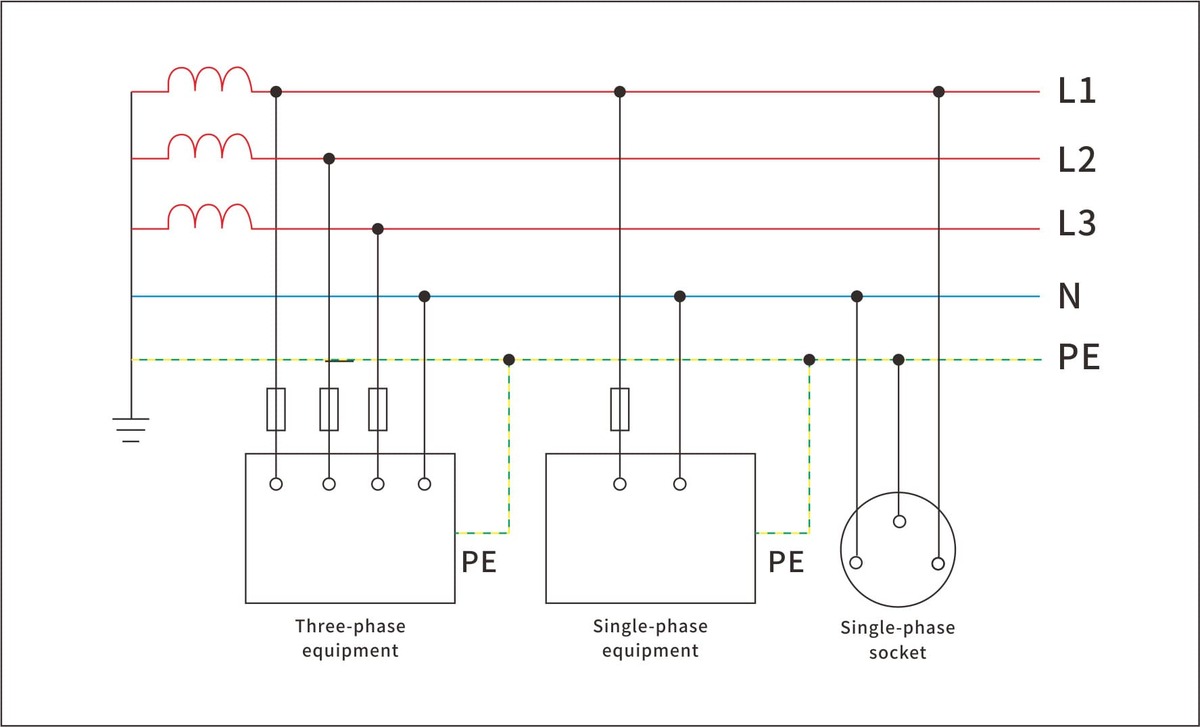
Figure 6 - TN-S grounding system
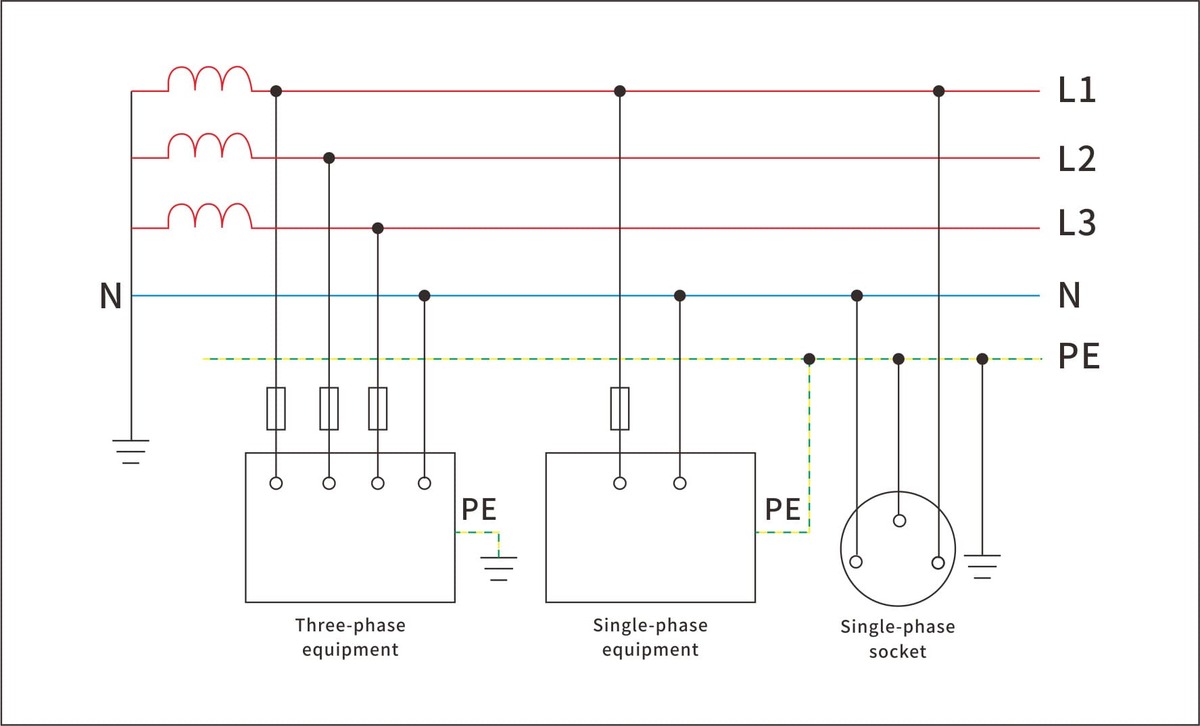
Figure 7 - TT earthing systems
In contrast, 4+0 SPDs use only varistors between each line and the combined PEN or PE conductor. Thy are typically applied for TN-C systems where N and PE share a path and a neutral-to-earth surge path isn't required or could pose issues.
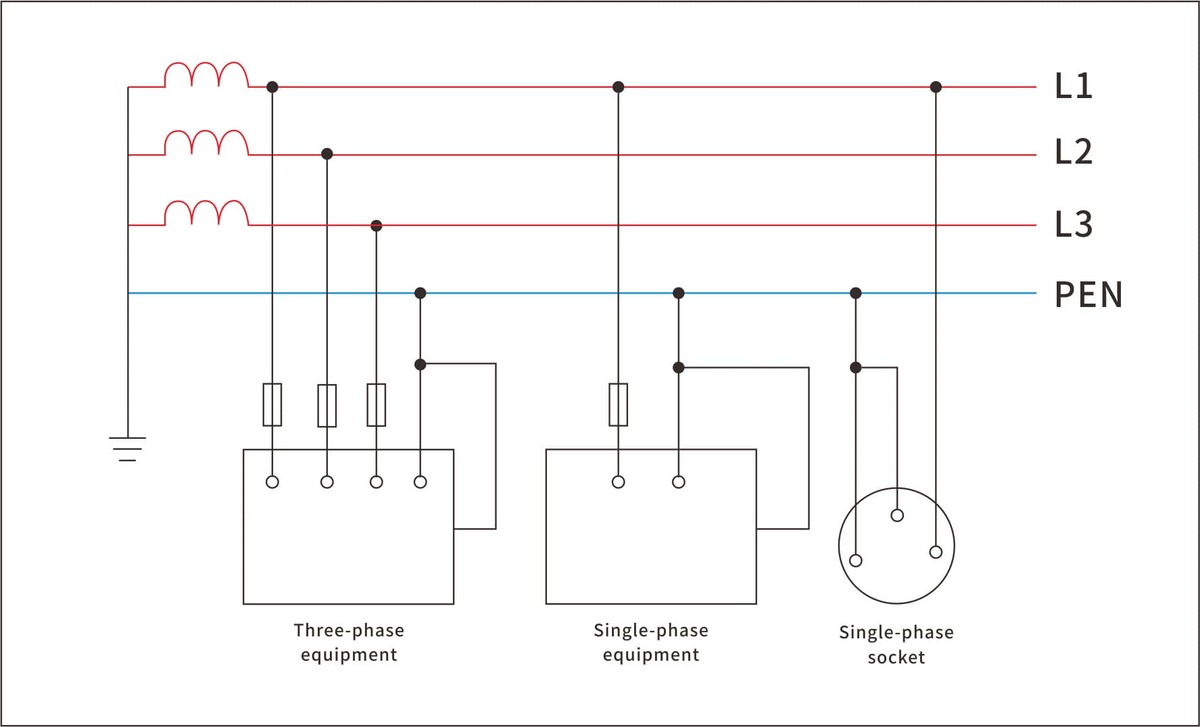
Figure 8 - TN-C grounding systems
Industries such as renewable energy, manufacturing, logistics, and healthcare are increasingly adopting 3+1 T1+2 SPDs due to their compact form, reliable operation, and compliance with international standards like IEC/EN 61643-11. Solar farms and wind turbine stations, often located in remote areas prone to lightning, deploy 3+1 SPDs to sustain uptime and protect costly inverters and controllers. Similarly, factories and data centers rely on them to prevent system outages and equipment failures caused by power surges.
Top-tier models like Dehn’s DSH TT 255, Citel’s DAC1-13S-31-150, and Thor’s TRS5 represent advanced protection technologies. Units feature high surge capacity, pluggable modules, thermal disconnectors, and real-time fault indication—meeting the rising demand for smart, space-efficient protection.
As industrial infrastructure becomes more digitalized and distributed, integrating reliable 3+1 T1+2 SPDs is no longer optional—it’s a strategic investment in operational continuity and electrical safety.
FAQs
Can I use the Thor-TRS 5 SPD together with Citel and Dehn SPDs in the same electrical system?
Answer: It is not recommended to use different brands of SPDs, such as Thor-TRS 5, Citel, and Dehn, within the same electrical system. Each SPD may have different response characteristics and protection capabilities, which could lead to suboptimal performance and inconsistent surge protection.
Are Thor-TRS 5 SPDs compatible with all types of electrical systems?
Answer: The Thor TRS 5 SPD is compatible with a wide range of electrical systems, including residential, commercial, and industrial setups. However, it is important to verify the system’s voltage and current ratings before installation to maintain optimal performance.
Will using the Thor-TRS 5 SPD affect the warranty of my existing electrical equipment?
Answer: Using the Thor TRS 5 SPD should not negatively affect the warranty of your electrical equipment, provided that the installation follows the manufacturer’s guidelines. It is always advisable to confirm with the equipment manufacturer to sustain compatibility with third-party surge protection devices.
Can I layer different types of SPDs (T1+2, T2, T3) in a single electrical circuit?
Answer: Yes, layering different types of SPDs, such as T1+2, T2, and T3, in a single circuit is highly recommended for cascaded protection. Cascading approach offers multi-stage surge protection, where each type of SPD addresses different levels of surge energy. T1+2 SPDs handle direct lightning strikes, T2 SPDs protect against lower energy surges, and T3 SPDs provide protection for sensitive electronics. The layered approach provides comprehensive protection across all surge levels.
What is the role of the earthing system in protecting electrical systems with Thor-TRS 5 SPDs?
Answer: The earthing system is crucial for the proper functioning of the Thor-TRS5 SPD, securing that surge energy is safely dissipated into the ground, preventing damage to electrical equipment. A well-designed and properly maintained earthing system maximizes the effectiveness of your surge protection and enhances the longevity of your equipment.

